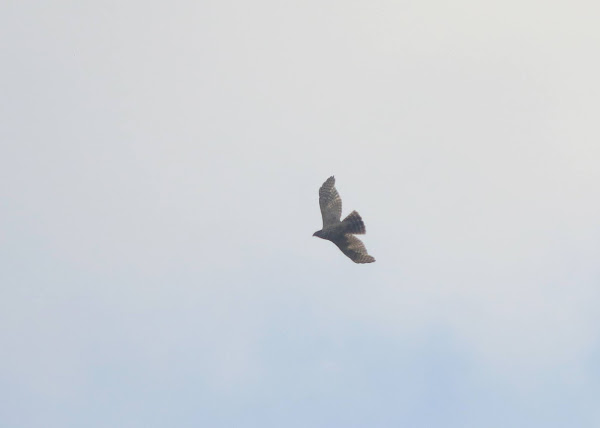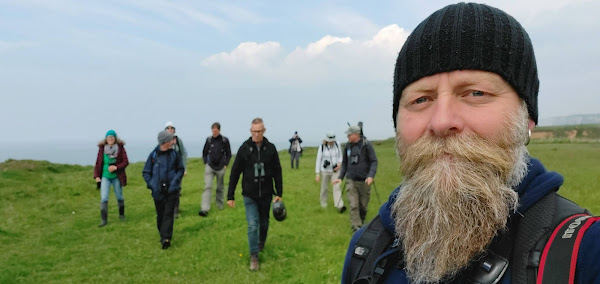It's a wrap on our last guiding days of the month, and what a fine few days it's been.... we've had a great spring across the board at Yorkshire Coast Nature, but (partly because of increased demand) Rich and I rarely have chance to co-lead groups of late, and so a three-dayer with a lovely team of eight clients was always going to be fun.
Kittiwakes gathering nesting material alongside us on the Flamborough clifftops
The tour incorporated a wide range of habitats and specialities, all within 45 minutes of the accommodation (at Highfield Farm on the Wolds), and - after what seemed like an eternity of preceding cold and grim weather - the sun burst forth right on cue, and stayed out for the whole duration; sun block, hats and t-shirts replaced winter coats, and we couldn't have asked for better conditions.
Another good sign that we're doing things right is the high proportion of return clients, greatly adding to the craic on our tours, and we like to think it's about much more than just birds (although, to be fair, we'd do pretty well if it was...).
Goshawk speeding by in the forest
Our first afternoon was spent at Tophill Low, where we have access to all the hides, which provided for us admirably - breeding birds up close included Marsh Harriers, Little Ringed Plovers, Oystercatchers, Gadwall, Common Terns and much more, with a great variety of butterflies, dragonflies and flowers to regularly distract us.
Wall on Sea-thrift at North Landing
Day two was all about the coast, and specifically Flamborough. Glorious sunshine and a full day soaking up the sensory overload of the colony at its busiest - knee-deep in Puffins, Guillemots, Razorbills, Kittiwakes, Fulmars and more, with plenty of Shags, Gannets, and Peregrine activity, and land-based migrants and breeders (from Stonechats and Wheatears to numerous Sedge Warblers); the hours flew by and it was hard to tear ourselves away from the clifftops.
Guillemots - spot the egg
Day three was all about the forests, and we were blessed with Mediterranean-type conditions from the start. Exploring our favourite corners of Wykeham in the morning was a joy; at one peaceful stop alone, we'd close-up Goshawk, Honey-buzzard and purring Turtle Dove all within a few minutes of each other.
Little Ringed Plover getting justifiably shirty with an Oystercatcher chick at Tophill
A lazy lunch at the Raptor viewpoint provided lots more activity (including displaying Honey-buzzards) before we descended into Troutsdale for our final session. Another favourite spot of ours yielded pretty much all of target species - including Dipper, Kingfisher, Redstart, Marsh Tit, Grey Wagtail, lots of Spotted Flycatchers and many other breeders - and by the end of a hugely enjoyable third day, we'd exceeded a hundred species without even trying very hard.
Breeding Stonechat at Flamborough
But it wasn't quite over yet, on account of a Nightjar safari I was leading that evening in Harwood Dale forest, with a different (but equally lovely) group of YCN clients. Long story short, the cold spring and subsequent lack of reliable Nightjar action did not bode well as we ambled into the forest; but it could hardly have been better scripted, with lots of memorable, close-up, in-your-face Nightjar activity - churring, quipping, wing-clapping, sparring and more.
One of three European Honey-buzzards we enjoyed in Wykeham forest











